Monday to Saturday 8 AM to 5 PM
Services
Our Services
Trusted Safety Materials Suppliers in UAE: Full Body Harness, Lanyards, Tripod and Safety Shoes UAE
At Safe Science International, we are one of the leading safety materials suppliers in the UAE, providing top-quality safety equipment designed to protect workers across various industries. From fall protection systems to personal protective equipments, we ensure that your workplace complies with safety standards, keeping your employees safe while working in high-risk environments. Our comprehensive range of products includes full body harness, safety hand gloves, safety shoes UAE, and specialized fall protection systems for various applications.
Whether you’re looking for a full body harness for your workers, durable safety hand gloves, or reliable safety shoes in UAE, Safe Science International is your trusted partner for all safety needs in the UAE. We also supply tripod systems, a three-legged stand that provides stability and support for surveying instrument and leveling instruments used in engineering. Additionally, our collection features Safety Harness and lanyards, ensuring complete fall protection solutions for your workforce.
Features :
- High-quality safety products designed for various industries and environments.
- Durable and comfortable gear, including full body harness and safety hand gloves
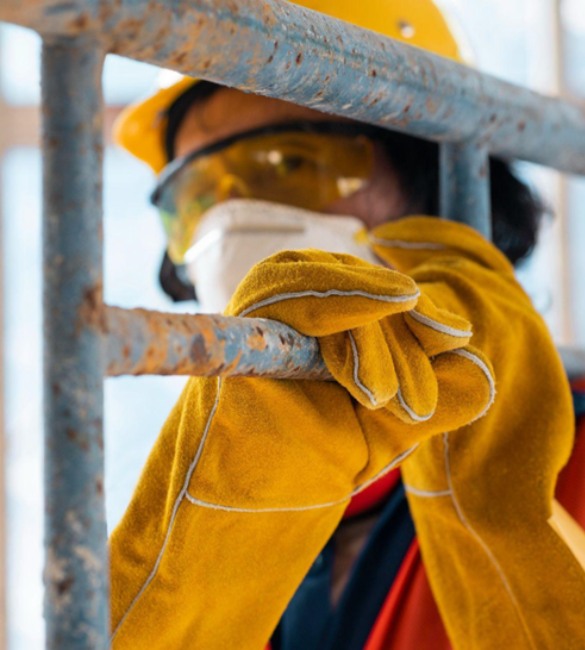
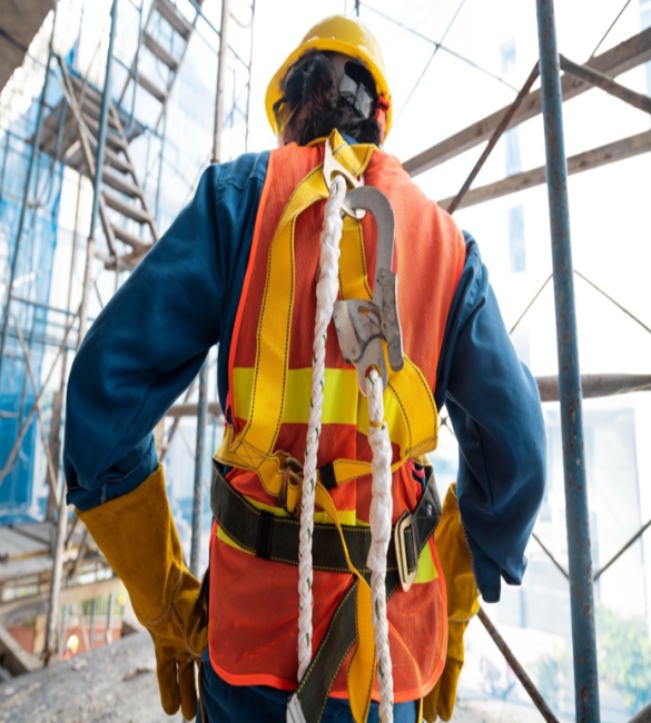
Fall Arrest System
Our fall arrest system is engineered to provide maximum protection in case of a fall. Designed to stop falls in progress, it includes reliable anchor points, connectors, and harnesses that meet all regulatory standards. Whether working at heights on construction sites or rooftops, our fall arrest system ensures that your workers are safeguarded at all times.
As one of the top safety materials suppliers in UAE, we offer a wide range of fall protection equipment, including full body harness systems and specialized gear to suit different workplace requirements.
There are two main types of fall arrest systems:
- Personal fall arrest systems (PFAS): These systems are worn by the worker and are attached to an anchor point.
- Structural fall arrest systems: These systems are attached to the structure itself and do not require the worker to wear a harness.
Features:
- Prevents falls with robust anchor points and shock-absorbing connectors.
- Fully compliant with international safety standards for reliable protection.
Vertical Life Line System
A vertical life line system is essential for workers who need to ascend or descend safely.Our vertical life line systems are designed for ease of use, durability, and compliance with the highest safety standards. These systems are ideal for construction, roofing, and maintenance tasks, ensuring that your workers remain protected from falls throughout their workday.
A vertical lifeline system consists of the following components:
- Lifeline: The rope or cable that is fastened at both the top and bottom of the work area is known as the lifeline.
- Anchors: Anchors are the points where the lifeline is attached. They must be strong enough to support the weight of both the worker and the lifeline itself.
- Harness: The worker wears the harness to attach themselves to the lifeline. Made of comfortable and durable materials such as nylon or polyester, it provides secure attachment without hindering movement.
- Lanyards: Lanyards are connectors that attach the harness to the lifeline. They are designed to withstand the force of a fall, offering strong, dependable connection points.
- Fall Arrester: This device stops the worker from falling if they lose their footing. It’s crafted from shock-absorbing materials like steel or nylon to reduce the impact during a fall.
Features :
- Provides reliable vertical protection with secure anchor points and high-strength lifelines.
- Easy to install and maintain with built-in shock absorption for fall prevention
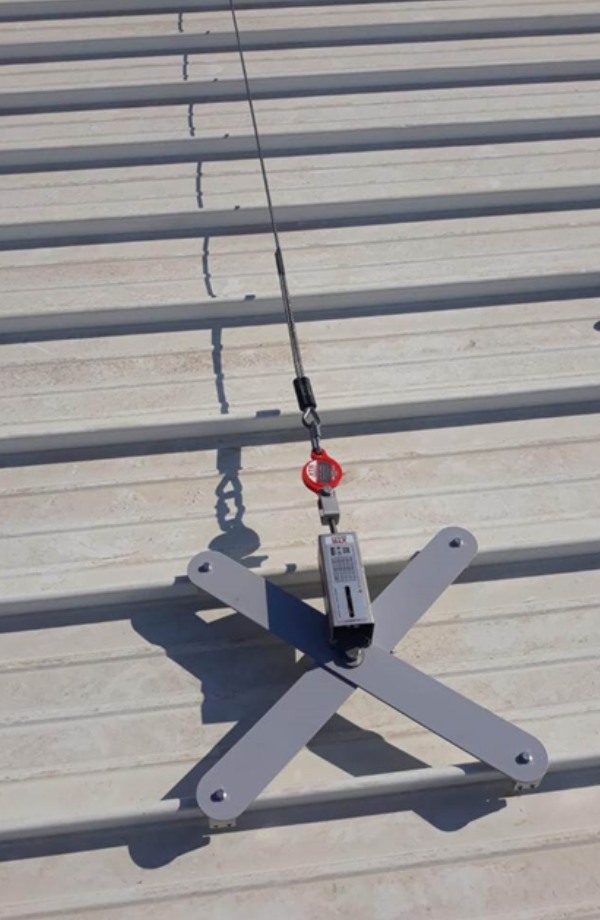
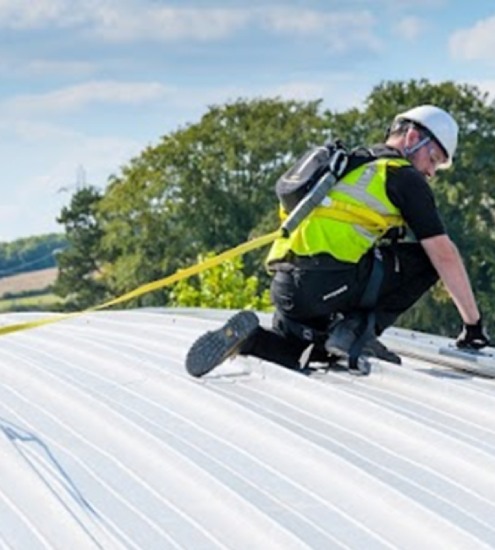
Horizontal Life Line System
Our horizontal life line system offers versatile and reliable fall protection for workers moving horizontally while at height. These systems are ideal for high platforms such as rooftops and bridges, where workers must have flexibility but still be secured to a safe anchor.
For worker safety and adherence to safety rules,we offers specialized horizontal life line systems made to fit your unique requirements. To maintain your system operating at peak efficiency, we offer installation, inspection, and maintenance services.
Features:
- Allows for horizontal movement while ensuring fall protection and security.
- Customizable systems to suit different working environments and safety requirements.
Roof Top Guard Rail
The roof top guard rail system is an excellent passive fall protection solution, providing a barrier between workers and fall hazards. Our roof top guard rail systems are designed for easy installation and meet the stringent safety requirements of the UAE.
This system provides a long-term fall prevention solution, making it perfect for rooftop work when frequent access is necessary. Our commitment to providing high-quality safety materials is demonstrated by our guarantee for both the durability and affordability of our roof top guard rail systems.
Features :
- Permanent passive protection that prevents falls from elevated areas.
- Easy installation and long-lasting durability, suitable for frequent rooftop access.
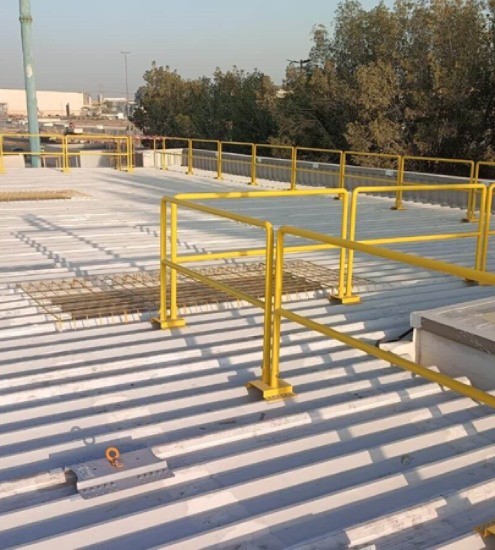
In addition to the information above, here are some additional tips for choosing and using fall arrest systems:
- Choose a system that is appropriate for the specific application.
- Make sure that the system is properly installed and maintained
- Train all workers who use the system in its proper use.
By following these tips, you can help to ensure that your fall arrest system is effective in preventing falls and keeping your workers safe


